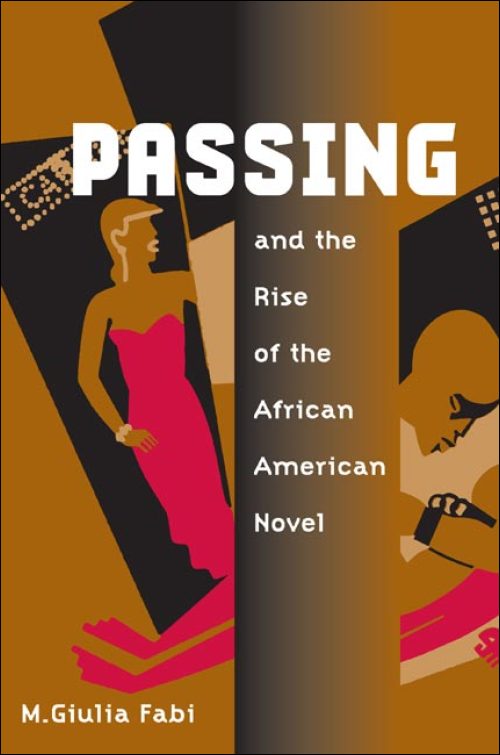Passing and the Rise of the African American NovelPosted in Books, Literary/Artistic Criticism, Media Archive, Monographs, Passing on 2012-05-18 21:04Z by Steven |
Passing and the Rise of the African American Novel
University of Illinois Press
2001
208 pages
6 x 9 in.
Paper ISBN: 978-0-252-07248-2
M. Giulia Fabi, Associate professor of American literature
University of Ferrara, Italy
Revealing the role of light-skinned black characters passing for white in African American literature
A CHOICE Outstanding Academic Title, 2003
Passing and the Rise of the African American Novel restores to its rightful place a body of American literature that has long been overlooked, dismissed, or misjudged. This insightful reconsideration of nineteenth-century African American fiction uncovers the literary artistry and ideological complexity of a body of work that laid the foundation for the Harlem Renaissance and changed the course of American letters.
Focusing on the trope of passing—black characters lightskinned enough to pass for white—M. Giulia Fabi shows how early African American authors such as William Wells Brown, Frank J. Webb, Charles W. Chesnutt, Sutton E. Griggs, Frances E. W. Harper, Edward A. Johnson, and James Weldon Johnson transformed traditional representations of blackness and moved beyond the tragic mulatto motif. Challenging the myths of racial purity and the color line, these authors used passing to celebrate a distinctive, African American history, culture, and worldview.
Fabi examines how early black writers adapted existing literary forms, including the sentimental romance, the domestic novel, and the utopian novel, to express their convictions and concerns about slavery, segregation, and racism. Chesnutt used passing as both a structural and a thematic element, while James Weldon Johnson innovated by parodying the earlier novels of passing and presenting the decision to pass as the result, rather than the cause, of cultural alienation. Fabi also gives a historical overview of the canon-making enterprises of African American critics from the 1850s to the 1990s and considers how their concerns about promoting the canonization of African American literature affected their perceptions of nineteenth-century black fiction.
